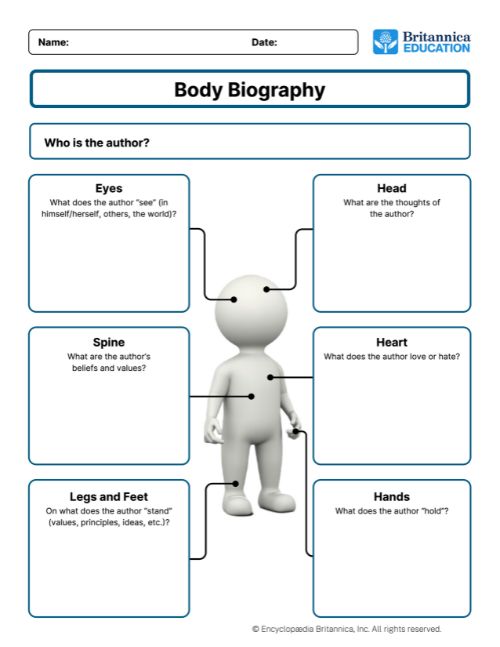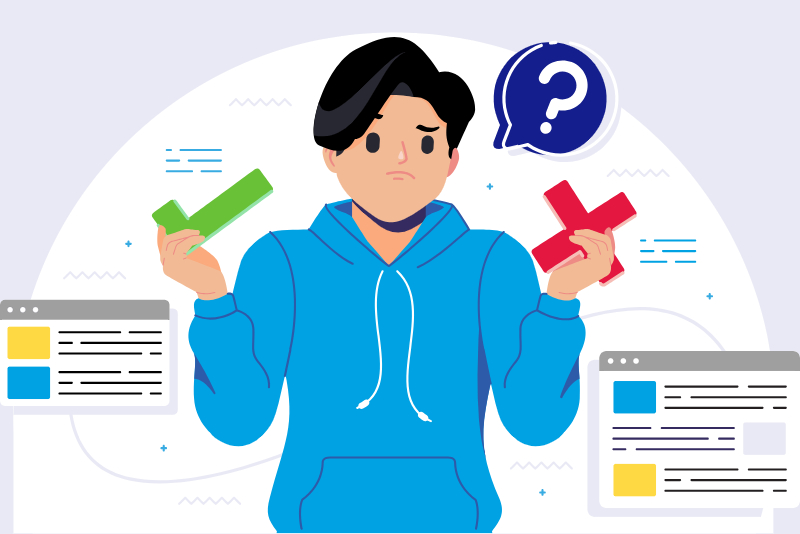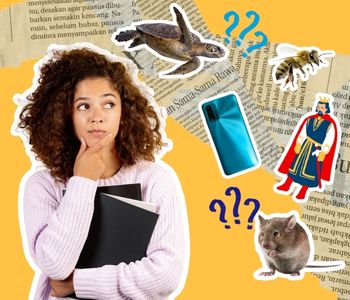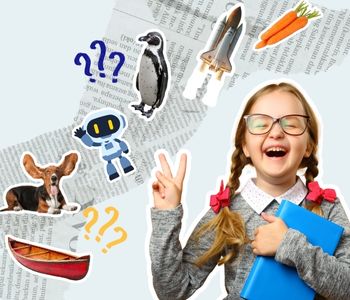

Table Of Contents
Students are ready for a fresh start—and we know you are too! To help you kick off the year with less stress, we’ve gathered 6 time-saving back-to-school activities from Teach Britannica. These free resources make teacher prep easier while helping you engage students and build classroom community from day one.
Teach Britannica, our open-access, ready-to-go educator toolbox, contains literally hundreds of time-saving activities and worksheets that you should definitely plan to use with your students. We’ve narrowed down the list to our six favorites for starting the school year; here’s some ideas for how to use them!
Bell Ringers & Exit Tickets for School Kick-Off
Jump-start any class with Teach Britannica’s bell ringers. This collection really takes the cake when it comes to speed. Our quickest K-12 activities will grab your class’s attention, even before the bell rings.
Bell Ringers & Exit Tickets for School Kick-Off
Let’s Chat
The Let’s Chat activity is all about getting your students to open up and interact with each other in a low-stakes way. A perfect back-to-school icebreaker, this bell ringer offers thoughtful prompts for different ages and question types, from surface level to deeper dives.
For example:
• If you could visit any place (real or imaginary), where would you go, and why?
• What is something you’re proud of that you’ve done or accomplished (big or small)?
• Who is someone—past or present—who inspires you, and what qualities do you admire about them?
Check-in Survey
A quick check-in is great to do every day, but it’s especially fitting for the start of the year as teachers are getting to know their students.
This activity can be a bell ringer or exit ticket—or even something to bookend the class. How are your students feeling about a certain topic? Collecting this student data can help you get to know their varying needs, analyze positive or negative correlations, and identify general behavioral patterns.
#KeyIdeas
Ask students to generate #hashtags to review key ideas from an activity. This early in the school year, this exit ticket can help review student thoughts about starting a new grade or returning to their school routine. Have some implementation ideas:
1. After Goal-Setting Activities
Students create hashtags that capture their main goals or intentions for the year. They might generate tags like #MathConfidence, #BetterTimeManagement, #NewFriendships, or #LeadershipGrowth. This helps them distill their bigger aspirations into memorable, shareable phrases.
2. Following Classroom Expectations Discussion
After reviewing classroom rules and procedures, students can create hashtags that represent the key behaviors or attitudes they want to bring to class. Examples might include #RespectfulListener, #HelpfulClassmate, #CuriousLearner, or #GrowthMindset.
3. After Learning Style or Study Skills Exploration
Students generate hashtags about the study strategies or learning approaches they discovered work best for them. They could create tags like #FlashcardMaster, #StudyGroupBenefits, #QuietSpaceNeeded, or #VisualLearnerLife.
4. Following Team-Building Activities
After collaborative activities or icebreakers, students create hashtags that capture what they learned about working with others or what they appreciate about their new classmates. Examples: #DiverseStrengths, #BetterTogether, #UnexpectedConnections, or #TeamworkMakesTheDreamWork.
5. After “Getting to Know You” Sessions
Students create hashtags that represent the most important things they want their teacher and classmates to remember about them. These might be #BookwormAndAthlete, #QuietButDetermined, #AlwaysAsksQuestions, or #LovesHelpingOthers.
6. Following a School Tour or Orientation
Students generate hashtags about their feelings, observations, or excitement about the new school year. Examples could include #ReadyForChallenges, #ExcitedAboutScience, #NewBeginnings, or #BringOnSeniorYear.
Instructional Strategies for a Helping Hand
Know what you want to teach or discuss with your class, but not sure how to facilitate the topic? Give our instructional strategies a try.
Four Corners Instructional Strategy
Get students moving, learning about each other, and thinking about how they approach learning and school challenges. Have some implementation ideas:
1. Getting to Know How Students Learn Best
Set up corners for different learning styles and have kids move to where they think they learn best. You could have one corner for students who like to see things, another for those who learn by listening, one for hands-on learners, and one for kids who like reading and writing. Once students are in their corners, they can talk about what actually helps them in class and make a quick list to share with everyone else.
2. Helping Students Think About Their Goals
Hang signs for different time periods (e.g., this week, this month, this semester, and this year). Give students some example goals and let them walk to the corner that matches when they’d want to accomplish each one. For example, if you say the goal is “get better at taking notes,” some might head to the “this week” corner while others go to “this month.” It’s a nice way to get them thinking about both short-term and long-term planning.
3. Finding Out What Subjects Excite Them
Make corners for different subject areas or interests, like science and math, arts and creativity, history and social studies, and health and physical education. Students move to whatever area they’re most excited about this year and then chat with others who picked the same thing. They might discover shared interests or even come up with ideas for projects that combine different subjects.
4. Building Classroom Community
Find out how students like to work with others. Are they a helper, leader, team player, or independent worker? When students choose their corner, they can talk about what they bring to the classroom and how different working styles actually help everyone succeed. It’s a great way to show that there’s room for all types of learners and workers.
5. Exploring How They Solve Problems
Set up corners for different problem-solving approaches: talking through problems with others, doing research first, trying things out to see what works, or asking for help right away. Give students a school-related scenario, see where they naturally go, and have groups share their strategies with the whole class.
Graphic Organizers to Get to Know You
A quick-hitting worksheet is always a good idea! Students can fill out the following graphic organizers as a way to introduce themselves to you and their classmates.


We at Britannica Education hope your 2025-26 school year is unmatched in energy, attention, and learning! Visit Teach Britannica anytime, anywhere, for more resources like these all year round.
Interested in subscribing to our student-facing solutions? Contact us!

About the Author
Kristie Bangali
Curriculum & Instruction Learning Specialist
Kristie, a Curriculum Learning Specialist at Britannica Education, has over 20 years of experience in pedagogy and curriculum development. She specializes in aligning educational content with academic standards and adapting to diverse student needs. Kristie’s proficiency with digital learning platforms was pivotal during the Covid-19 pandemic, earning her the 2020 LHRIC TELL Award and 2021 Teacher of the Year. She authored a chapter in “Gamify Literacy: Boost Collaboration and Learning,” published by the International Society for Technology in Education (ISTE), showcasing her innovative approach in education. Her impact extends beyond direct teaching, influencing the broader educational landscape.











